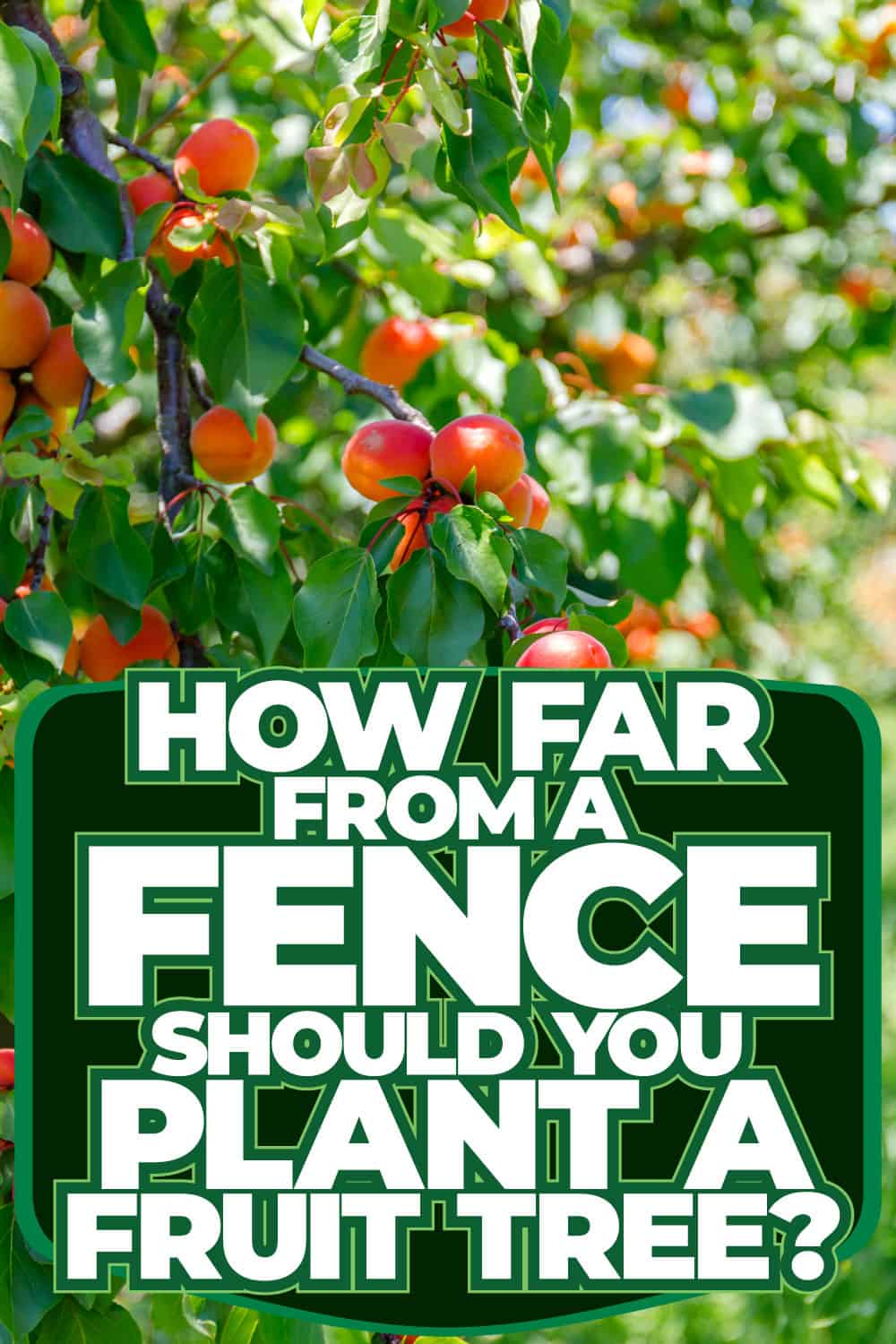You've always wanted your orchard, where you could pick fresh, ripe fruit right from your land. But how much space do fruit trees need? Fruit trees require proper spacing from each other and to the fence in order to reach their full potential and to enable simple harvesting. We've done the research to bring you answers to this question.
Proper spacing is important for fruit trees as knowing the proper distance will allow them to increase their output and also provide a neat and clean aesthetic for your garden. The distances listed below tell you how far to plant them from the fence as well as each other.
- Apple Trees - Between 30 and 35 feet (9-11 meters) between trees, but semi-dwarf and dwarf apples require just 15 feet (5 meters)
- Peach Trees - Should be 20 feet (6 meters) apart
- Pear Trees - Between trees around 20 feet (6 meters) and mid pears at 15 feet (5 meters)
- Plum Trees - Should be 15 feet (5 meters) apart
- Apricots - Should be 20 feet (6 meters) apart
- Sweet Cherries - Require a lot of land and should have approximately 30 feet (9 meters)
- Sour Cherries - Require a bit less space, roughly 20 feet (6 meters) between trees.
- Figs - Should be planted between 20 and 30 ft (6-9 meters) in a sunny location.
Now that you know the specific space needed for fruit trees, keep reading for additional information about them and why distance is essential for fruit trees.
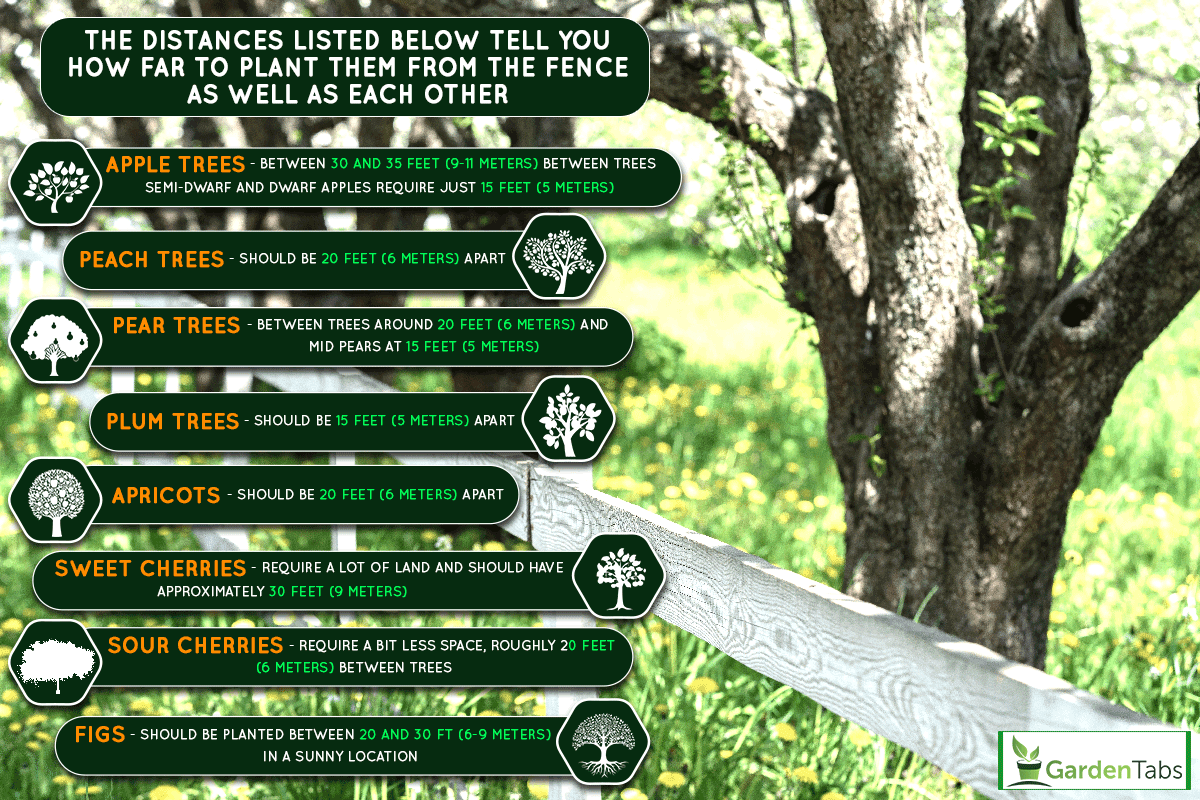
Why Is Distance Important For Fruit Trees?
Trees must be positioned to receive adequate sunlight and enable airflow to avoid fungal growth. With rich soil, give the tree more space since it will grow broader. Trees come in three sizes: regular, semi-dwarf, and dwarf. The most outstanding tree size is standard, the medium size is semi-dwarf, and the smallest size is dwarf.
- Standard fruit trees may reach heights of 18 to 25 feet (5-8 meters) at maturity unless they are peach or nectarine trees, which can reach heights of 12 to 15 feet (4-5 m.).
- Semi-dwarf fruit trees grow to be 12 to 15 feet (4-5 meters) tall and broad, except sweet cherry, which extends to be 15 to 18 feet (5 meters) tall and wide.
- Dwarf fruit trees can reach heights of 8 to 10 feet (2-3 meters).
How Much Space Would You Recommend In Fruit Trees?
There are a lot of fruit trees, so here are the most common ones and how much space they require. Note that these spaces also apply for the distance away from the fence so they can grow naturally.
Apple
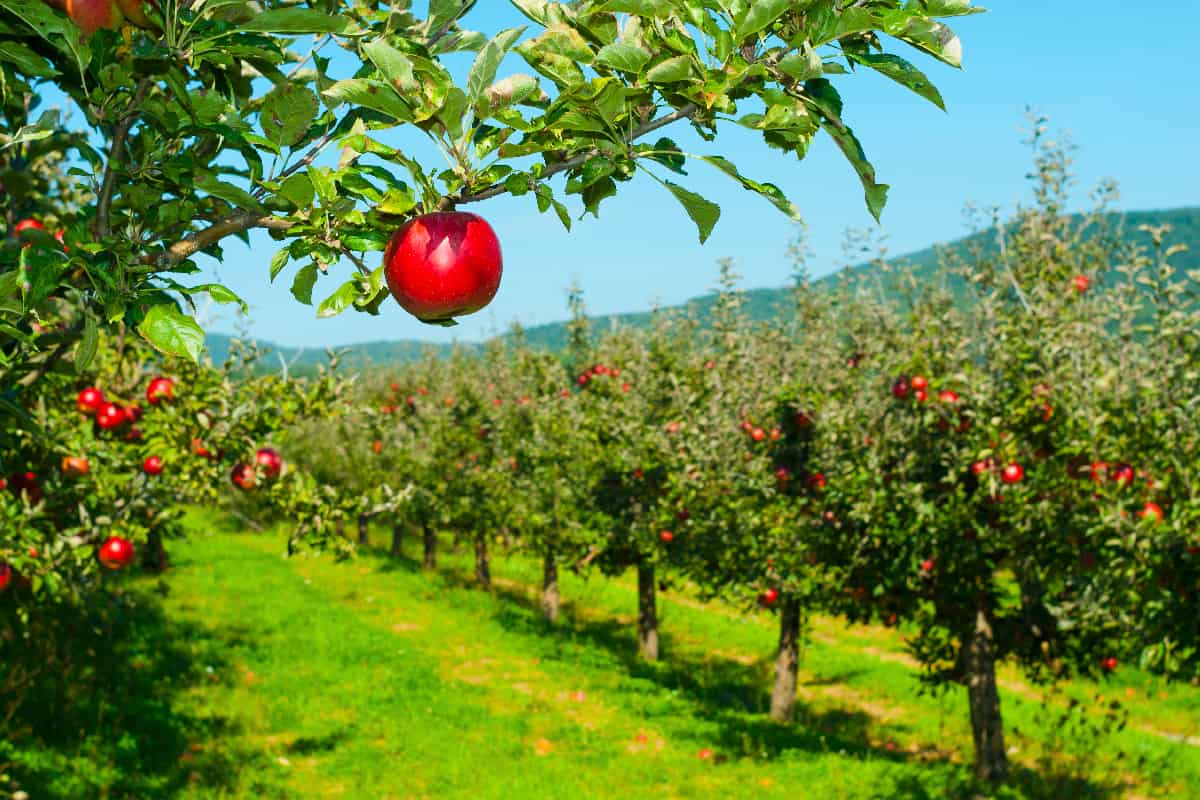
Plant apple trees at a distance of 20 to 25 feet apart. Semi-dwarf trees range from 12 to 15 feet making it ideal to provide them at least 15 feet.
Dwarf apple trees typically reach heights of eight to ten feet and have a comparable spread. They're content with the 10 feet that separates them from the around apples, structures, and barriers.
Peach
Delicious, tart peaches are often self-fruitful, so you should only need to grow one to reap the benefits. However, if you only plant a single tree, you might only get a modest harvest of peaches. Why not sow other seeds? If you get two trees of different types that bloom simultaneously, you'll have a larger crop of peaches.
Full-sized peach trees may reach up to 20 feet in height and are broad, so space them 20 feet apart. Dwarf peaches grow eight to ten feet tall with a ten-foot spread, so leave ten feet between each tree.
Pear
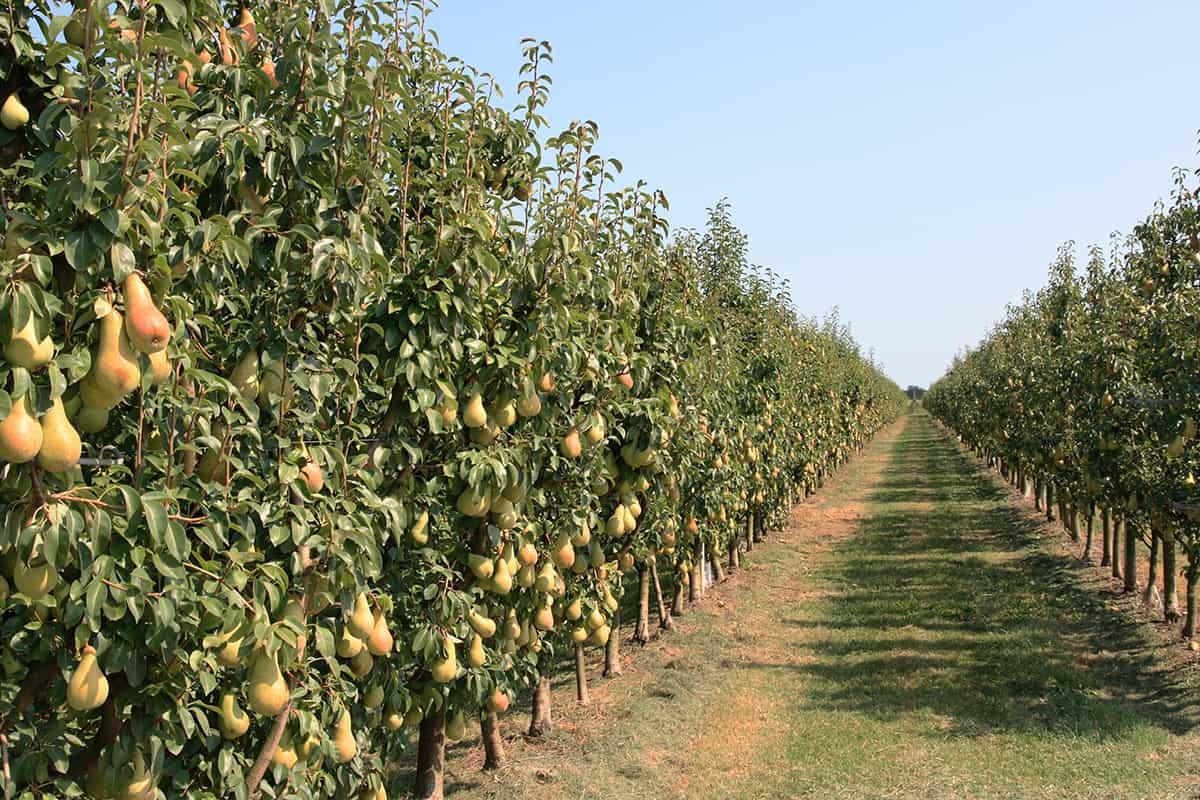
Asian and European pears, like apples, often require cross-pollination between kinds that bloom at the same time. On the other hand, pears do not develop as tall as apples. A full-sized pear can grow up to 20 feet tall and broad. Here are some tips when growing pears:
- Plant your pears 20 feet apart. Allow 12 feet between trees for semi-dwarf species, which can grow to reach 12 to 15 feet in height and 10 feet broad.
- Dwarf variants grow eight or ten feet tall and extend only 7 or 8 feet, requiring eight feet between each.
Plum
Because these trees are not self-fruitful, you should plant at least one other plum tree of a variety kind close after planting the first one. Plums grow to heights of 20 to 25 feet and spread out from 15 to 20 feet wide, so give each plant 20 feet of room on all sides. Dwarf plums may grow to be eight to ten feet tall and broad. Allow at least 10 feet between these.
Apricots
Fully grown apricot trees can develop to be 20 to 25 feet tall and broad, so leave 20 to 25 feet between each plant. Apricots are self-fruitful, which means you only need one tree to receive a crop. Cross-pollination between two distinct types that emerge at the same time, on the other hand, can increase yields, so why not plant around more than one?
While dwarf apricot types were unavailable until recently, you can now purchase dwarf kinds such as 'Garden Annie,' which grow to reach between eight and ten feet tall and broad. Allow eight to ten feet between each plant.
Sweet Cherries
Because the sweet cherry tree can not be self-fruitful, you'll have to grow at least two trees to acquire a crop. Sweet cherries may grow as tall as 35 feet and up to 25 feet wide, so they demand lots of room in the garden. Provide a minimum of 25 feet amongst each cherry tree.
Semi-dwarf sweet cherries reach 15 to 18 feet in height and width, while dwarf sweet cherries reach 12 to 15 feet in height and width. Semi-dwarfs should be 20 feet apart, while dwarfs should be 15 feet away.
Sour Cherries

The sour cherry, unlike its sweet cherry cousin, is self-fruitful. However, like with numerous fruits, your production will rise if you grow another variety of sour cherry trees nearby. So why not pick up at least two?
- Sour cherry trees may not grow as high as sweet cherry trees. Because standard sour cherries may grow up to 20 feet in height and broad, they should be spaced 20 feet apart.
- Dwarf versions can grow to be 8 feet in height with a range of ten feet and should be spaced ten feet apart.
Figs
These grow big, as figs do, over 30 feet in height with a comparable spread, which is ideally on goal for a fig. It'll grow old enough to extend up to 50 feet in diameter if you're fortunate. However, fig roots can be highly invasive, so place them at about 50 feet from every wall or structure.
Dwarf kinds grow to heights of 6 to 10 feet and widths from 5 to 8 feet. These varieties are much easier to cultivate when planting several trees within the same yard. Each dwarf figure should be eight feet apart.
How to Build a Fence for Fruit Trees?
If you are familiar with DIY gardening, you should also try building a fence for your fruit trees. Building a fence for fruit trees is fairly easy, and you don't need a professional to build one for you. Here are the materials that you'll need:
- Posthole Digger
- 4x4 posts
- 2x4 top rail, 8 feet long
- 14-gauge wire
- Hand Pruners
Now that you have everything you need for your fences, here are the steps on how to build them:
- Use a posthole digger to establish a support post for your fence. Make sure that they are evenly spaced from one another.
- Stretch the wire from post to post.
- Dig a planting hole for your fruit trees and ensure they are at least twice the diameter of the root ball.
- There's a technique called "Training Plants," in which you will tie or bend certain branches of the plant to let them grow to your desired shape.
What are Space-Saver Varieties?
Plant breeders have been attempting to generate thin, or columnar, variants of wide varieties of fruit trees to make fruit-growing accessible to individuals who live in urban areas. They're more challenging to locate and pricey than conventional sizes and don't produce as much fruit.
But what difference does it make when you may plant them near together or on a small plot? Columnar orchards are intended to grow straight up rather than spreading outward, they seldom grow wider than two to four feet. This means they may be planted only 3 or 4 feet apart!
You may still plant fruit trees in a thin, columnar style when you have a tiny yard. The trees most commonly planted in the espalier form are apples, cherries, peaches, pears, and pomegranates.
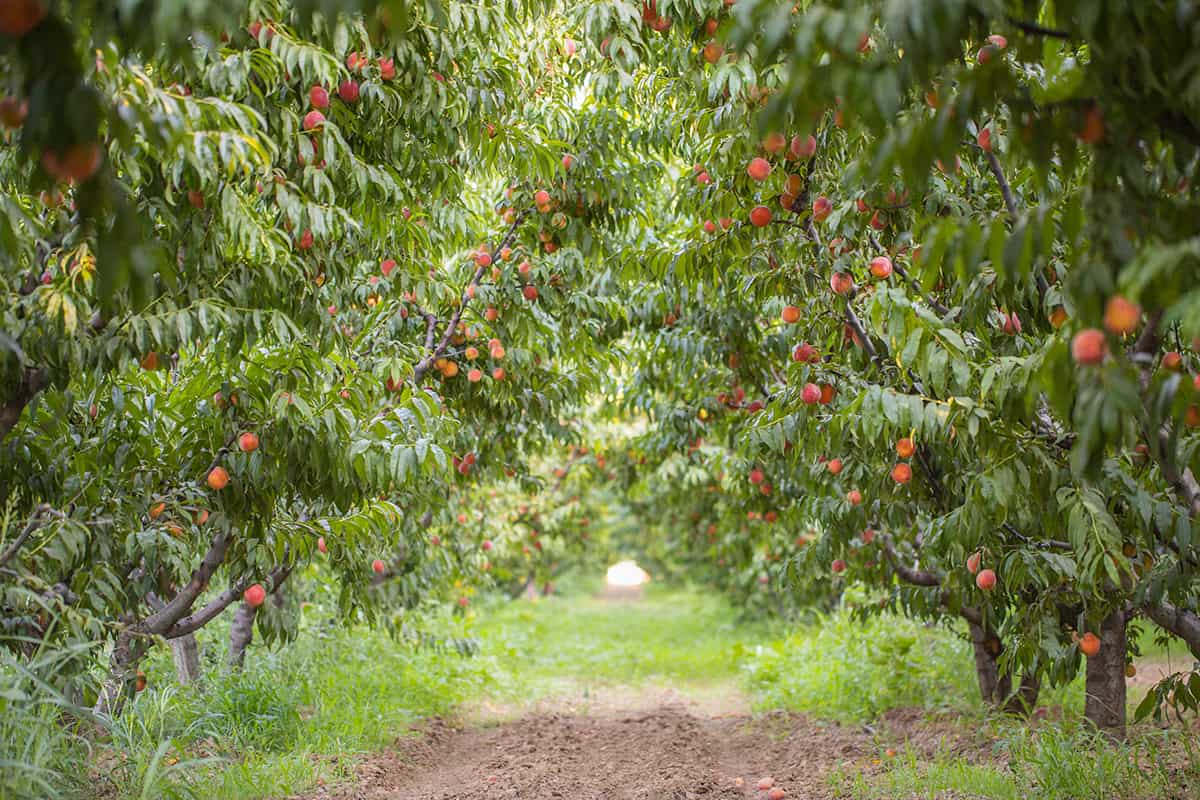
Conclusion
Fruit tree spacing in a private orchard differs from that of a professional grower. Fruit tree spacing is determined by the kind of tree, soil conditions, mature tree height and canopy, and any dwarfing features of the rootstock.
Here are other helpful articles for you to read:
How Much Space Between Garden Beds?
What Is Eating My Bleeding Heart Plant [And How To Prevent It]?
When To Cut Back African Daisies [And How To Do That]
